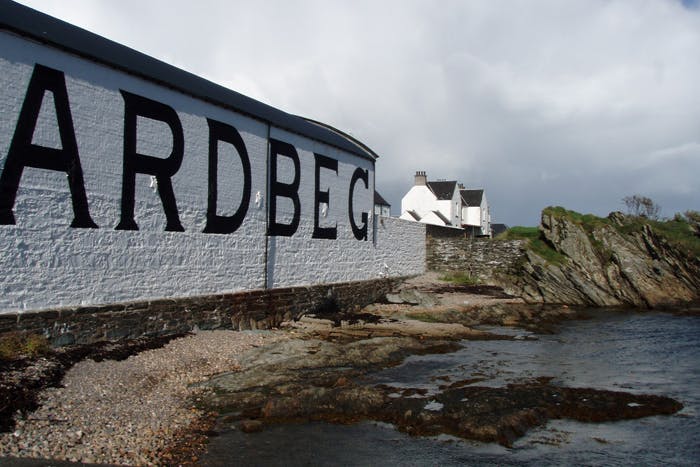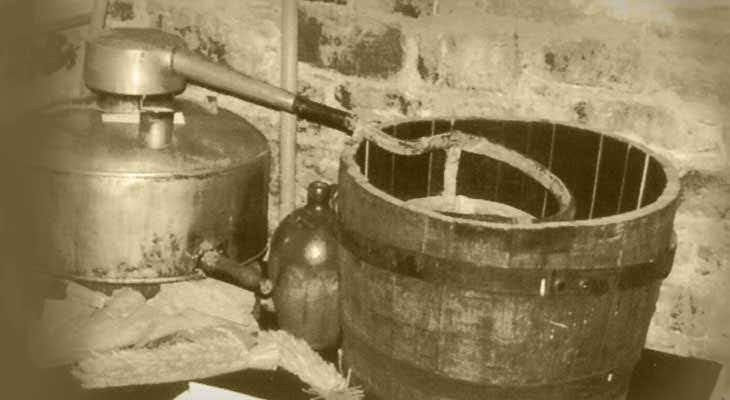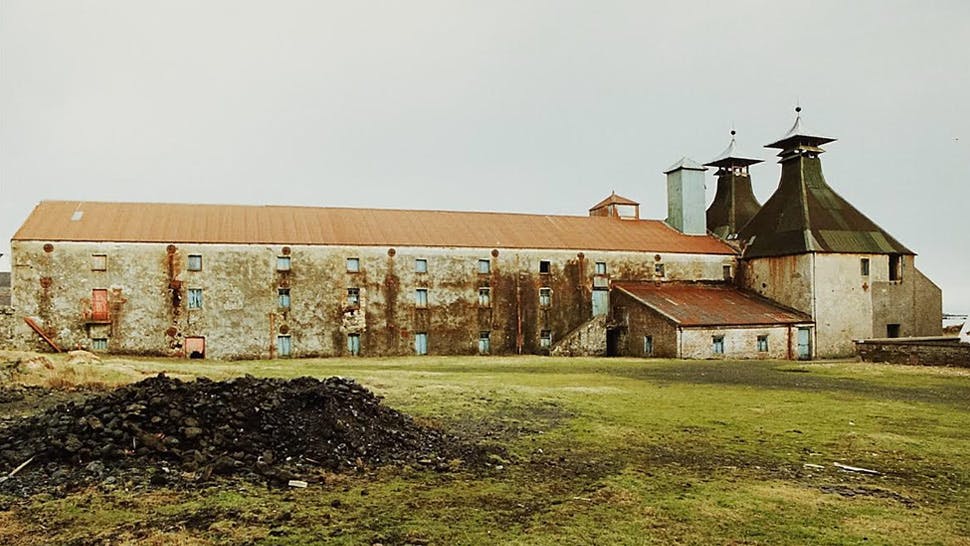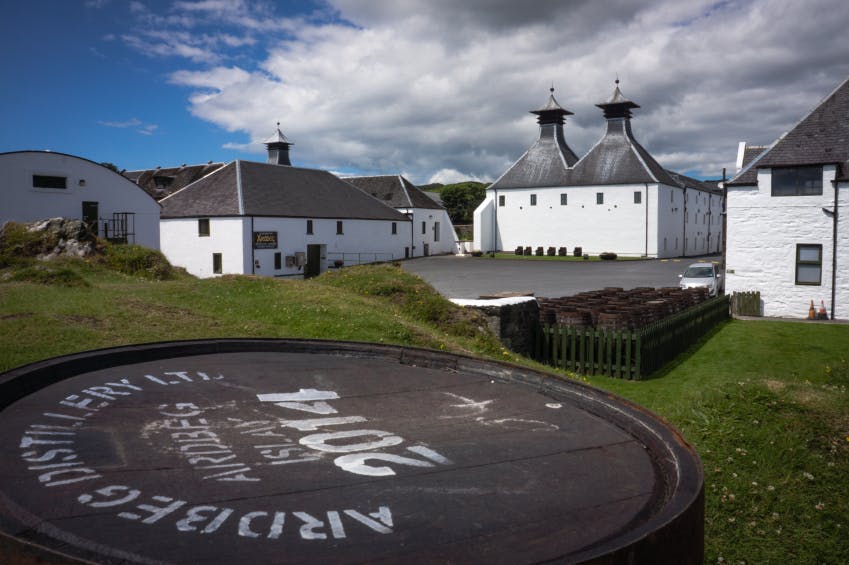
Located on the west coast of the Scottish island of Islay, the Ardbeg distillery has grown over the years to become a must-visit in the world of Islay whiskies and global whiskies.
In this article, we trace the history of this legendary distillery, from its beginnings.
The birth and rebirth of a pioneer of Islay whisky
The beginnings of a legendary distillery
Although John Macdougall officially founded the Ardbeg distillery in 1815, after receiving official permission to distill, it was established a few years earlier, in 1794, on the island of Islay, Scotland, hidden from view, on the same coastline as the Laphroaig and Lagavulin distilleries.
When John Macdougall took over the small farm, he began legally producing whisky in 1817, with rudimentary facilities and limited production. Gradually, the distillery took shape and started selling its bottles on the island.

In the following years, the whisky production of the Ardbeg distillery did not exceed 2,500 liters of alcohol per week. It was self-sufficient in marketing its whisky on the island, but to sell its bottles off the island, it relied on Thomas Buchanan, a merchant from Glasgow.
In 1838, Thomas Buchanan bought the distillery for £1,800 and took over the company. In 1840, under the leadership of Colin Hay, Ardbeg began to grow, gaining a reputation for the quality of its whiskies.
Throughout the 19th century, the distillery changed ownership again until a period of stability was reached in 1922. That year, Colin Elliot Hay, with his company Alexander Macdougall & Co Ltd, bought the Ardbeg distillery for £18,000 and managed the company until its liquidation in 1957.
Since its beginnings, the distillery has continued to grow, both in reputation and production capacity. By the end of the 19th century, the distillery was producing 1.2 million liters of whisky per year.
The 20th century: A tumultuous period
Despite its acquisition, the 20th century was not smooth sailing for the Ardbeg distillery. First, the distillery had to shut down during the First and Second World Wars, like many other distilleries on the island of Islay. Its operations were once again disrupted due to the economic crisis and the shortage of malt on the island of Islay until the 1950s.

Subsequently, the distillery passed into the hands of various companies, and the two iconic kilns were decommissioned in 1977. In 1981, Allied Breweries decided to close the distillery. This closure, resulting in the loss of 18 jobs, had a devastating effect on the local community.
1996: The Renaissance of Ardbeg
The year 1996 marked a pivotal turning point in the distillery's history, after its acquisition by The Glenmorangie Company, a company co-owned by LVMH and Diageo. The two groups aimed to fully revive the distillery's operations. As a result, no less than £3.5 million was invested to renovate the entire distillery.
From that point onward, the distillery's activity and popularity experienced remarkable growth. Although production did not reach the levels of the past (600,000 liters per year in 1999), the quality was undeniable.

In the early 2000s, the distillery racked up several accolades. Ardbeg Ten Years Old won the title of Whisky of the Year in Jim Murray's 2008 Whisky Bible, followed by Ardbeg Uigeadail, which took the torch in 2009. In 2010, Ardbeg Corryvreckan was named the best single malt in the world at the World Whiskies Awards.
Today, the distillery continues to grow and release whiskies that are just as surprising as the next.
Trois whiskies phares de la distillerie Ardbeg
ARDBEG 10 ans Ten

52.9 €
Ardbeg Ten Years Old
The classic expression of the distillery, this 10-year-old single malt matured in bourbon casks, is considered one of the most peaty whiskies of Islay. It is particularly admired for its intensely smoky and earthy aromas, not to mention its undeniable maritime character.
ARDBEG Uigeadail

78.9 €
Ardbeg Uigeadail
This high-proof version of Ardbeg (54.2%) was named "Best Single Malt of the Year 2009" by Jim Murray, author of The Whisky Bible.
Uigeadail, the name of the source that provides the precious water to the Ardbeg distillery, also refers to a subtle blend of 10- and 13-year-old casks, as well as a few casks from the 1970s.
ARDBEG Corryvreckan

89.1 €
Ardbeg Corryvreckan
Located between the islands of Jura and Scarba, "Coirebhreacain", which means "cauldron of the speckled seas" in Gaelic, is the third largest marine whirlpool in the world.
Legend has it that a young Viking named Breacan had to survive 3 days and 3 nights in Europe's largest whirlpool, the Corryvreckan, to prove his love for the daughter of the Lord of the Isles.
The most powerful of the classic range, bottled at 57.1% ABV, Corryvreckan is aimed at lovers of extreme whiskies!
TO EXPLORE SCOTTISH WHISKIES FURTHER
La Maison du Whisky has three boutiques in Paris:
In each of these boutiques, you'll find a wide selection of whiskies, rums, sakes, and other fine spirits.
Because a whisky can be described in a thousand words, our experts will be delighted to guide you through the must-try scotch whiskies at La Maison du Whisky.
Follow our tasting calendar for upcoming events, or visit the Golden Promise Whisky Bar, which offers an extensive selection of whiskies and other spirits by the glass.
Written by
- Quentin JEZEQUEL - SEO project manager at LMDW.
Verified by
- Didier GHORBANZADEH - Wine & Spirits Expert at LMDW
- Clotilde NOUAILHAT - Editorial and Corporate Communications Manager at LMDW